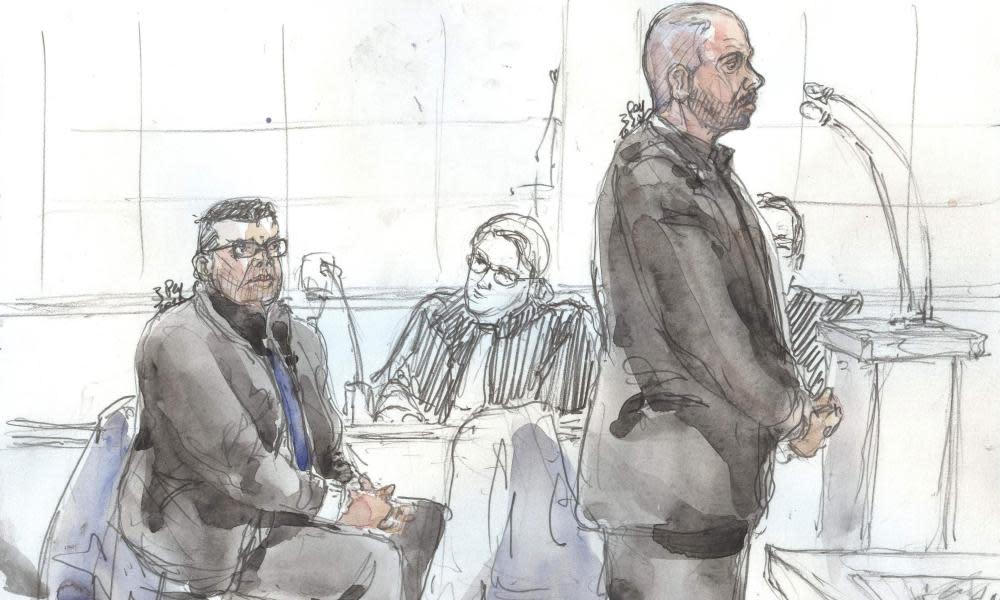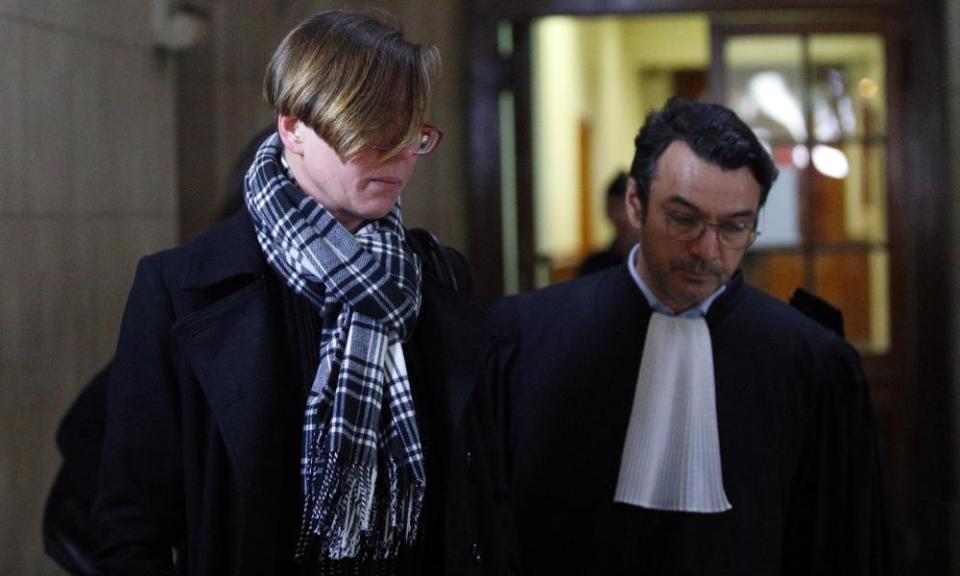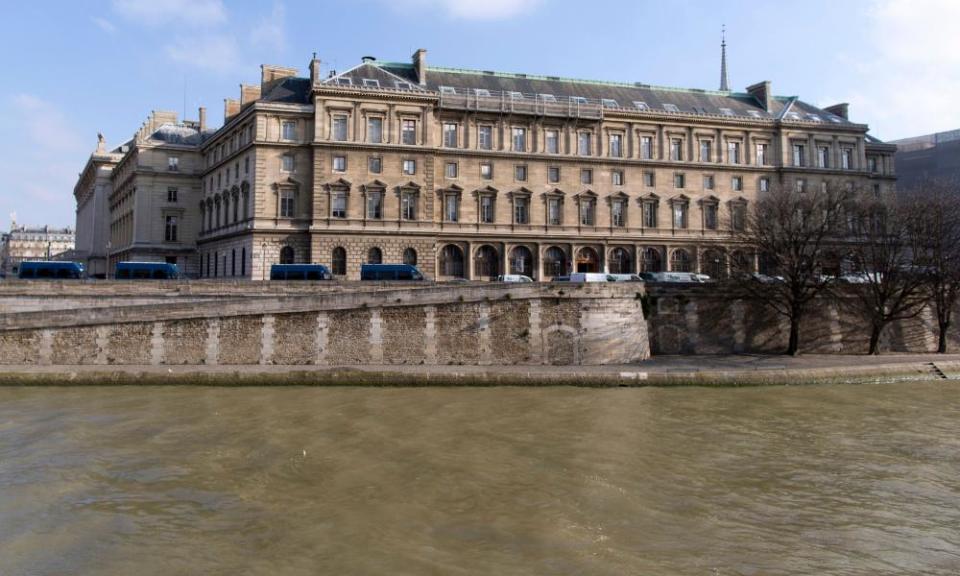France in shock at gang-rape trial of police from famous BRI unit

Emily Spanton grew up with police officers – her father had been a high-ranking officer in the Toronto force – so when two French officers she met while drinking in a Paris bar invited her to see their famous headquarters, she agreed.
Spanton was, she says, drunk and shaky on her feet. “I knew I wasn’t in a state to find my hotel. And I thought that going to a police station would sober me up as there would be plenty of lights and people,” the Canadian said.
But after she went upstairs at the celebrated 36 Quai des Orfèvres to the fifth floor and entered room 461, Spanton said she walked into “the worst night of my life”.
What allegedly happened in the next 80 minutes in the early hours of 23 April 2014 is at the centre of an ongoing court case in chamber three of the assize court in Paris’s imposing Palais de Justice, and has left France shocked.

On Wednesday, Spanton, 39, cried as she told the three judges and nine members of the jury she was gang-raped by at least two men. As she tried to leave, she says, she was dragged into another office and raped again.
In the dock are two members of the Brigade de Recherches et d’Intervention (BRI), an elite unit specialising in tracking down gang members and terrorists. Maj Nicolas R, 49, and Capt Antoine Q, 40, (French law prevents the names of the police officers being given) deny the charges, claiming Spanton consented to sex.
The shock in France is as much over the details of the case as the idea that the allegations are not just targeted at individual officers but at the reputation of this prestigious police unit.
L’Express magazine suggested the case had “poisoned” the Paris police force for almost five years and nearly signed the death warrant of the BRI.
Spanton’s legal team had battled to have the officers brought to trial after investigating judges decided there was no case to answer, citing “inconsistencies” in her testimony. After the Paris public prosecutor stepped in, this decision was overturned on appeal.
Police colleagues had suggested that because Spanton had allegedly been flirting and kissed the two officers during the evening, they believed she was happy to go further. “Their mistake was to have let the truth come out bit by bit because they were afraid of the consequences on their families and their careers,” one police officer told L’Express. “This has led to questions about their credibility.”
Spanton’s lawyer said the judges had travelled to Canada to interview her friends and family and “dig around” in her personal life, but had not done the same for the accused.
The building at 36 Quai des Orfèvres is a place of fact and fiction. Known to officers simply as “36”, its mythical reputation was immortalised by Georges Simenon’s celebrated detective Maigret and in French films. For real-life police, “36” is the top rung of the career ladder.
Attached to the Palais de Justice, the building was home to the Paris police force from 1913, when officers chased criminals on horses or bicycles, until 2017, when it moved to more modern buildings.

Spanton, who was working as an estate agent, said she had been drinking in Le Galway, an Irish bar near 36, when some time around midnight she agreed to go to the officers’ headquarters.
“They explained the police station had been the subject of films and made it sound like something I would want to see,” she said.
Even the softly spoken translator was unable to diminish the violence of the testimony of what happened after Spanton entered room 461. “Someone was forcing himself inside my mouth,” Spanton said. “Someone penetrated me. Then someone else. When it finished, I gathered up my belongings, but I couldn’t open the door. I was pulled into another office and everything happened again.”
Spanton said she remembered being raped by up to three men, but said she could not identify the third. She told the jury her glasses were taken from her and she was unable to see clearly.
“I just gave up; just wanted it to be over … I kept my eyes closed.”
She was, she insists, in “no fit state to consent” to anything. She says when she left the building 90 minutes later, barefoot and without her tights, she told the guards at the door she had been raped and they told her to “go home”.
DNA from both the accused was found on Spanton’s underwear. Her DNA was found on Antoine Q’s. No match was found for the DNA of a third man.
The two accused wiped all messages and videos from the night off their mobiles, but one found on a colleague’s phone read: “She likes an orgy, hurry up.”
Asked by the public prosecutor on Friday if it was “usual to take young women to your office”, Antoine Q, replied: “Not at all”. He said room 461 was his office and admitted having sex in it was “something of a fantasy”. Both men have returned to work in the police force. They face a jail sentence of up to 20 years if convicted.
After reading a medical report of Spanton’s injuries, the presiding judge, Stephane Duchemin, asked Spanton what she expected from the court. “I just want to stand up and publicly confront these men. Then I want to move on, close this chapter.”

 Yahoo News
Yahoo News 
